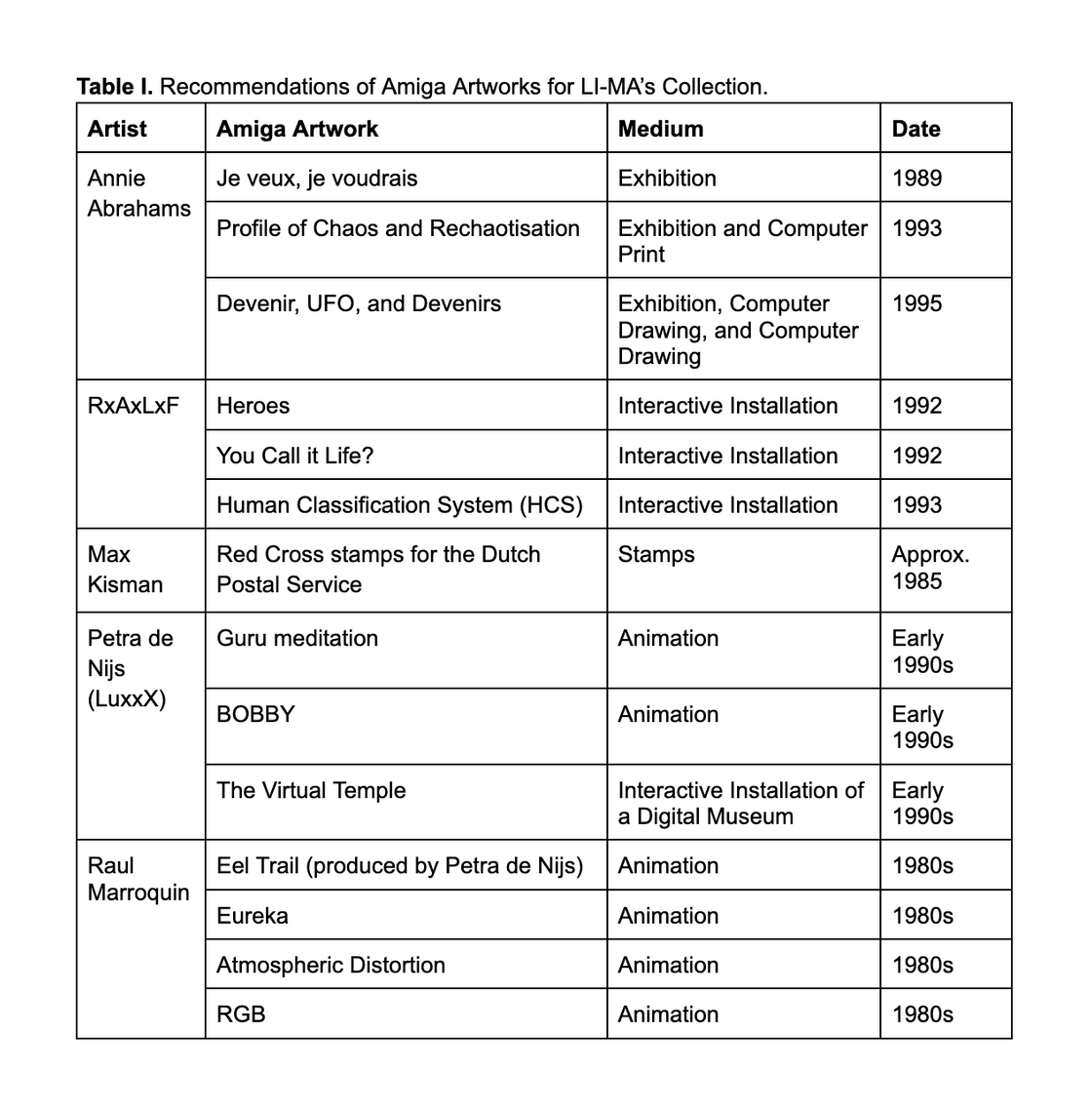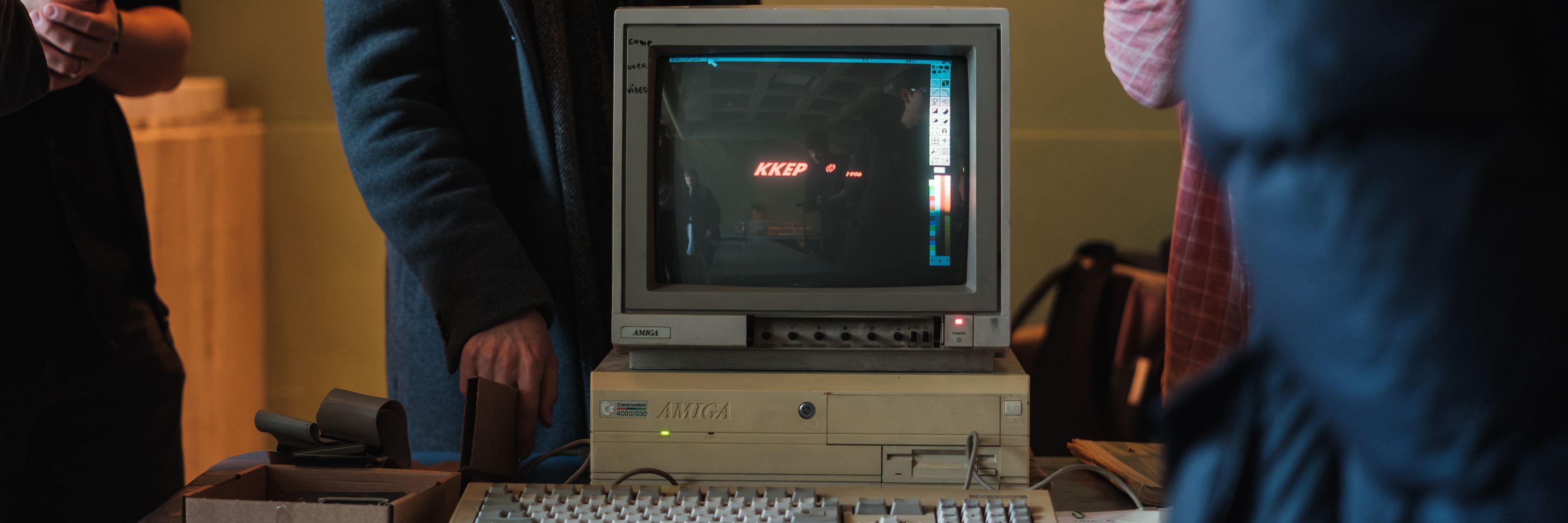
16-07-25
Important Amiga Artists and Artworks Uncovered through AMIGA NU
Written by Olivia Schoenfeld, Conservation Intern at LI-MA
During the AMIGA Nu project, LI-MA mapped the Dutch Amiga scene and its network, encountering many artists who worked with the Amiga in the 1980s and 90s. This process revealed key Amiga works that are not yet part of the LI-MA collection but would significantly enrich it. This inclusion can help give prominence to the Amiga’s deserved place in computer art history. Each of the following artists and their mentioned artworks would be an asset to the LI-MA collection, as they include different manifestations and representations of how the Amiga was employed by artists. Additionally, it highlights women computer artists who worked with Amiga, as they are largely underrepresented in collections.
Artist and Artwork Descriptions
Annie Abrahams (b. 1954) is a Dutch performance artist who specialises in internet-based performances and video installations. Between 1989 and 1996, Abrahams worked with 3D creation software titled DOEK, which was developed by Jan de Weille on an Amiga. Abrahams created 7 installations in which the DOEK software and Amiga played an important role, each of which is well-documented through photographs and writings. For example, her 1995 exhibition ‘Devenir’ at Galerie ESCA in Milhaud, France showcased 46 of her paintings made using DOEK and included an Amiga computer showing animations in the physical exhibition space (see Figure 1). Abrahams’ use of the unique DOEK Amiga software and the Amiga in physical spaces makes her installation(s) a well-suited fit to the LI-MA collection.
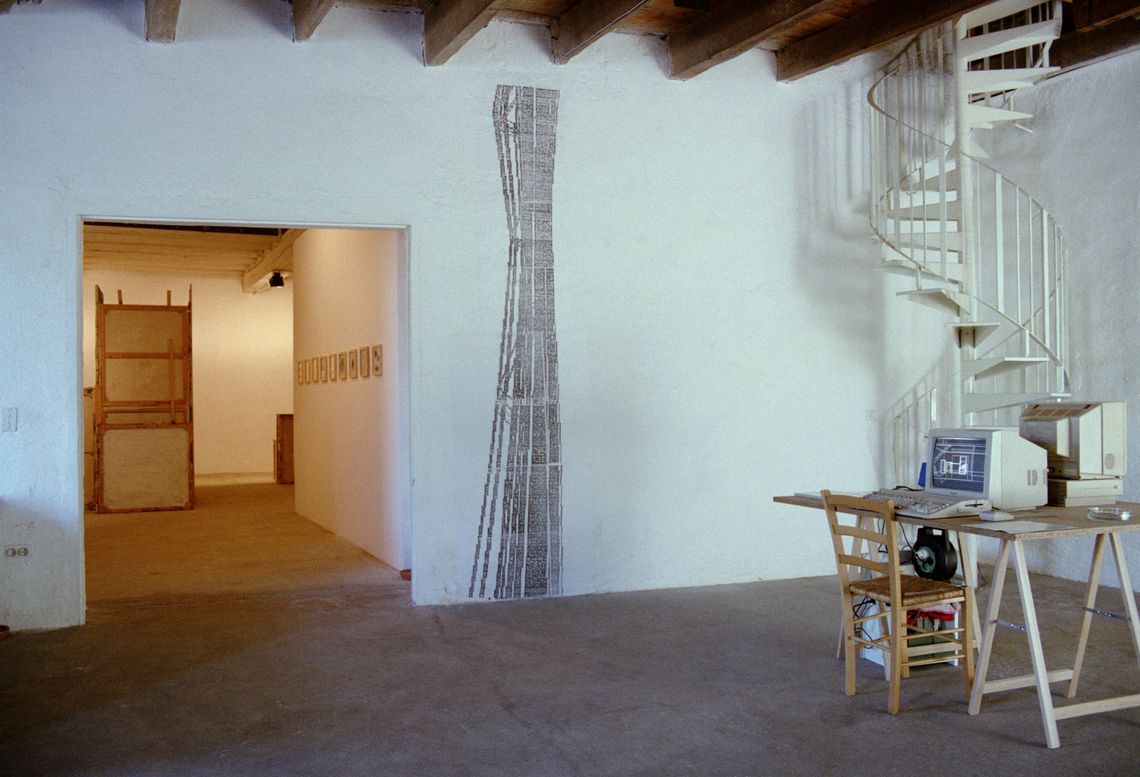
RxAxLxF is a Dutch multimedia artist who discovered the Amiga computer when studying at the AKI Academy of Art & Design. RxAxLxF’s final AKI exhibition included the installation 'Eternal Heroes', which explored humans' desire for violence and technology's role in war through Amiga-based interactive digital video. His final show work also integrated algorithmic art and social commentary in the 4 piece artwork titled 'Human Classification System'. This Amiga-based installation used sensors and algorithms to categorise individuals, reflecting on technology's growing ability to analyse, classify & control us completely in future. RxAxLxF’s installation-based Amiga artworks would be opportune additions to LI-MA’s collection, as they showcase the Amiga in an interactive manner.
Max Kisman (b. 1953) is a Dutch graphic designer and illustrator. Kisman was given a notable assignment in 1985, designing Red Cross stamps for the Dutch Postal Service, where he explored digital techniques that integrated traditional cut-out paper aesthetics. He used the Sinclair Spectrum to create the designs and produced negatives of the designs using a technical camera from an Amiga computer. As the chief graphic designer for VPRO tv in the Netherlands from 1992 to 1997, Kisman created animations with an Amiga. The many facets of Kisman’s Amiga-related artworks would be an illustrious addition to the LIMA collection.
Petra de Nijs (aka LuxxX) is a Dutch media artist who made numerous animations on the Amiga after following the Gerrit Rietveld Academie Audiovisual education track in the 1980s. Her Amiga animations were shown on ‘Black Hole TV’ by Raul Marroquin. De Nijs’ animations have also been exhibited at the Dutch Design Institute, Time-based Arts, and the International Media Festival in Maribor, Slovenia. Some specific Amiga animations de Nijs made in the early 1990s include Guru meditation and BOBBY. She also produced Marroquin’s Amiga artwork titled R. Marroquin’s Eel Trail (see Figure 2). It would be very appropriate to demonstrate Amiga animation artworks created by a female artist in LI-MA’s collection through the acquisition of de Nijs’ artworks.
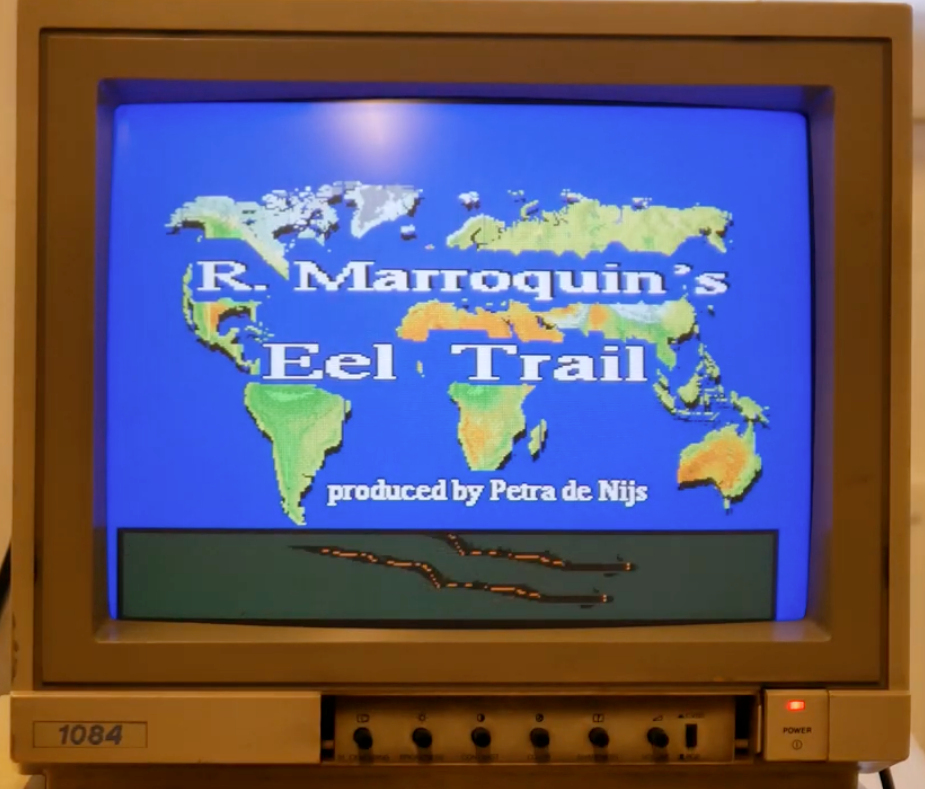
Summary of Raul Marroquin case study
The Amiga artworks of Raul Marroquin (b. 1948) are taken as a starting point for the AMIGA NU project. Marroquin is one of the vanguard of artists worldwide who experiment with video and television, with art via cable, video conferences, streaming media, and more. His work is always characterised by a light mockery of American consumer and media culture. Marroquin created a TV series with fictional characters, initiated the World’s First TV Convention in 1980, and created the first satellite connection between TV monitors that communicate with each other.
Some of Marroquin’s important artworks in his oeuvre were developed with Amiga. Marroquin used Deluxe Paint (also referred to as DPaint), a widely used Amiga paint program, to create his Amiga animated artworks. Before the start of the AMIGA NU project, Marroquin’s floppy disks had not been viewed, and his Amiga computer had not been started in thirty years. Fortunately, the project helped initiate research and conservation of Marroquin’s Amiga artworks, in light of making these works more accessible.
LI-MA has an existing setup for digitising floppy disks to create a disk image. During the start of the AMIGA NU project, some of Marroquin’s Amiga animations were successfully converted to Amiga Disk File (.ADF) format by following LI-MA’s disk imaging protocol. This conversion to .ADF format allowed for easy use in the emulated environment “Amiga Forever,” where the artwork files could be easily accessed outside of their original hardware (see Figures 3 and 4).
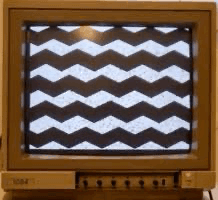
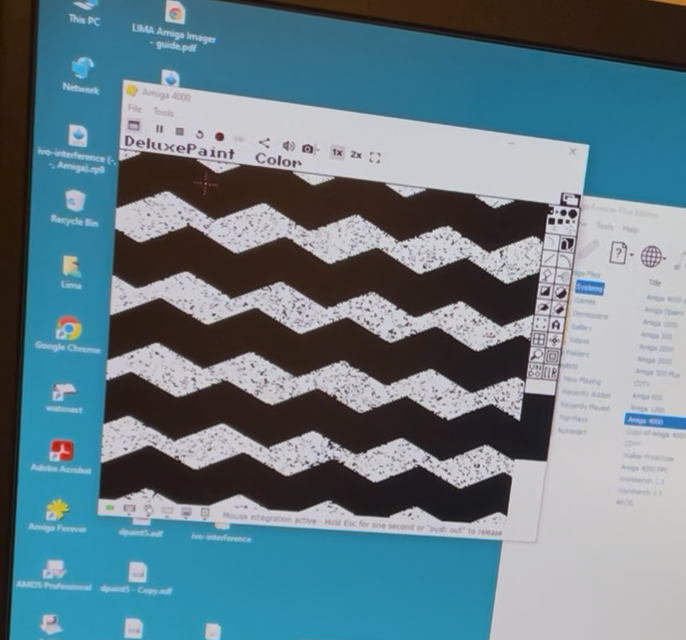
As mentioned, a key goal for Marroquin in revisiting his Amiga animations was to make them accessible in a more modern format. While the .ADF format makes it easy to use an emulator, there is still a dependence on hardware emulation software to view the files. Therefore, a protocol was created to convert the disk image .ANIM files to GIF format. The GIF format is popular and widely recognised across various platforms. Therefore, this allows for Amiga animations to be more easily accessible and enjoyed. The protocol was created by LI-MA Engineer Mauricio van der Maesen de Sombreff and written by LI-MA Conservation Intern Olivia Schoenfeld and includes step-by-step instructions with correlated screenshots of the process. Marroquin’s Pearls is an example of an Amiga animation that was successfully converted to a GIF using the protocol (see Figure 5).
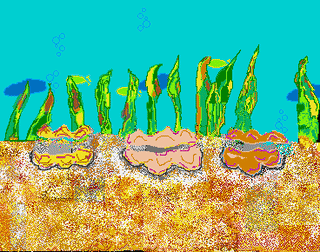
To take things further, steps were made to preserve the Amiga animations that reside on Marroquin’s Amiga hard drive, rather than on floppy disks. The process of disk imaging Amiga files from a hard drive to a personal computer (PC) allows for further preservation measures to be taken, such as emulation. This technique was explored by experts Wiel Seuskens and Ivo van Stiphout, and the methodology used for disk imaging Marroquin’s Amiga hard drive animation files was thoroughly documented.
Short-List Recommendation of Artworks
This compiled list of artworks encompasses Amiga artworks from artists who worked with the technology in the 80s and 90s, specifically in the Netherlands (see Table I). This list aims to shed light on artworks that would be beneficial to LI-MA’s collection if acquired, filling the gaps that currently exist.
